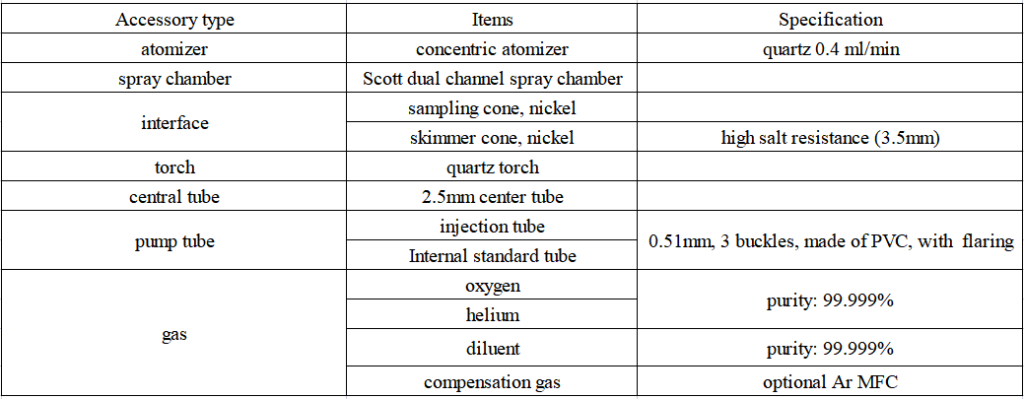Known as "industrial monosodium glutamate", "industrial vitamin" and "mother of new materials", rare earths are precious strategic metal resources with irreplaceable excellent magnetic, optical and electrical properties. Due to their great effect and low dosage, rare earth has become an important element to improve product structure, increase technological content, and promote technological progress in the industry. It is widely used in metallurgy, military, petrochemical, glass ceramics, agriculture, and new materials. Therefore, the requirements for high-purity REE materials are becoming more and more stringent. When other REE elements exist, it will often affect the function of the final product. Therefore, the detection method of high-purity rare earths is very important.
The detection method of impurity elements in pure REE needs to have high sensitivity and low detection limit. Commonly used detection instruments such as X-ray fluorescence spectroscopy, atomic absorption spectroscopy, and atomic emission spectroscopy are restricted by the detection limit, analysis process and analysis efficiency, and cannot realize the simultaneous and efficient analysis of multiple elements of impurity elements in REE. Inductively coupled plasma mass spectrometry has the characteristics of simple operation and simultaneous detection of multiple elements, but the determination of trace REE impurities using single-pole ICP-MS is still challenging: polyatomic ions in high-purity REE matrices will produce severe mass spectrum interference to some REE elements, such as the interference of 158GdH+ on159Tb and the interference of 1159GdOH+ on 175Lu in high-purity rare earth gadolinium oxide samples. The tandem quadrupole mass spectrometer (ICP-MS/MS) is equipped with dual quadrupoles (capable of dual mass selection), superior collision reaction cell technology (which can successfully eliminate common polyatomic interferences from the matrix through collision mode) , and the analyte ions can be separated from the interference ions through the mass transfer mode), which can realize the detection of REE impurity elements in high-purity rare earths.
In this paper, by using ICP-MS/MS to directly measure and analyze gadolinium oxide samples, the determination of remote elements is realized in the collision mode, and the determination of Lu and Tb elements is realized in the oxygen mass transfer mode. The operation is simple, the test is stable, and the efficiency is high. The accurate test and analysis of REE elements in high-purity REE provides ideas and materials.
Keywords: ICP-MS/MS, metallurgy, materials, gadolinium oxide, collision reaction cell, high matrix high salt configuration, oxygen mass transfer mode
Experimental part
Instrument
Table 1 Inductively coupled plasma mass spectrometer instrument

Table 2 Detection parameters of inductively coupled plasma mass spectrometer

Sample handling
Weigh the gadolinium oxide powder sample, slowly add nitric acid, shake gently to mix, cover the electric heating plate and heat at 160°C for about 1h, after completely digested and cooling, transfer it to a PP bottle with ultrapure water to dilute to a constant volume , then to be tested on the machine.
Standard curve and detection limit
The sample blank of the whole program was analyzed continuously for 11 times, and the detection limit of each element was calculated based on the dilution factor of 3 times the standard deviation, as shown in Table 3. The measured mass numbers, analysis modes, and calibration curve linearity (measured by correlation coefficient r) of various elements are also listed in Table 3.
Table 3 Determination of element mass, correlation coefficient and detection limit

Method precision
1μg/L was added to the prepared 7 parallel samples to test the precision of the method. The precision test results of each element are shown in Table 4. The RSD values of the measured values of each element are all better than 5.05%, indicating that the precision of the method good.
Table 4 Method precision

Actual sample test
Table 5 Results of rare earth element content in gadolinium oxide samples (mg/kg)

Epilogue
In this paper, 14 kinds of REE impurity elements in gadolinium oxide sample solution were successfully determined by ICP-QQQ. For elements with small sample matrix interference, the superior collision cell can be used to eliminate interference. For elements with large sample matrix interference, such as Tb and Lu, the oxygen mass transfer mode is used to achieve stable test analysis of the element. Using the extra quadrupole of ICP-MS/MS, the target mass can be selected to enter the reaction cell, and the reaction process in the complex matrix can be precisely controlled and monitored, and the polyatomic interference in the gadolinium oxide matrix can be effectively eliminated, so as to realize the detection of gadolinium oxide samples. Good test analysis.
Appendix
Equipment and Consumables Solutions
- EXPEC 7350 standard sampling system configuration details

2. Reagents and Standards


